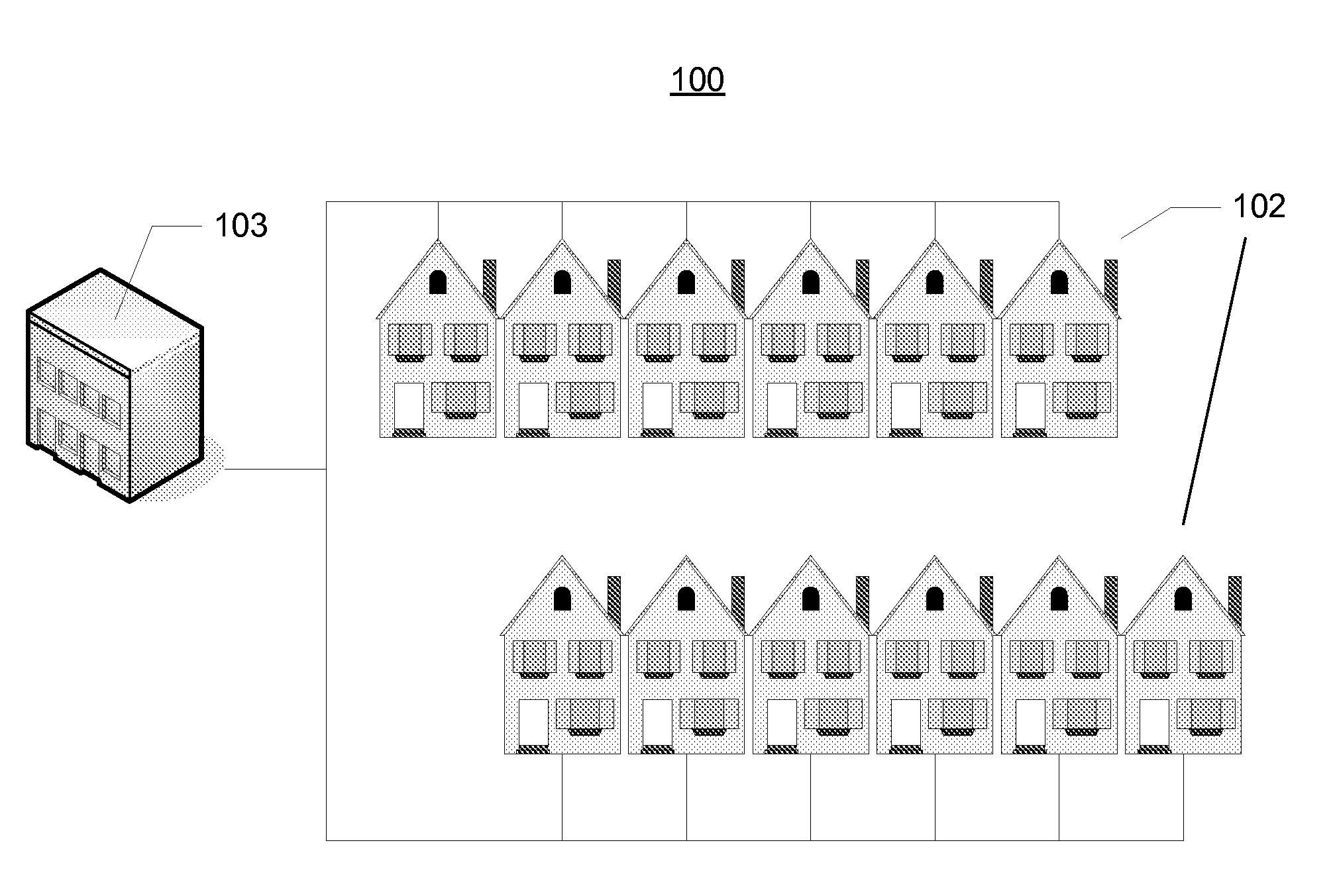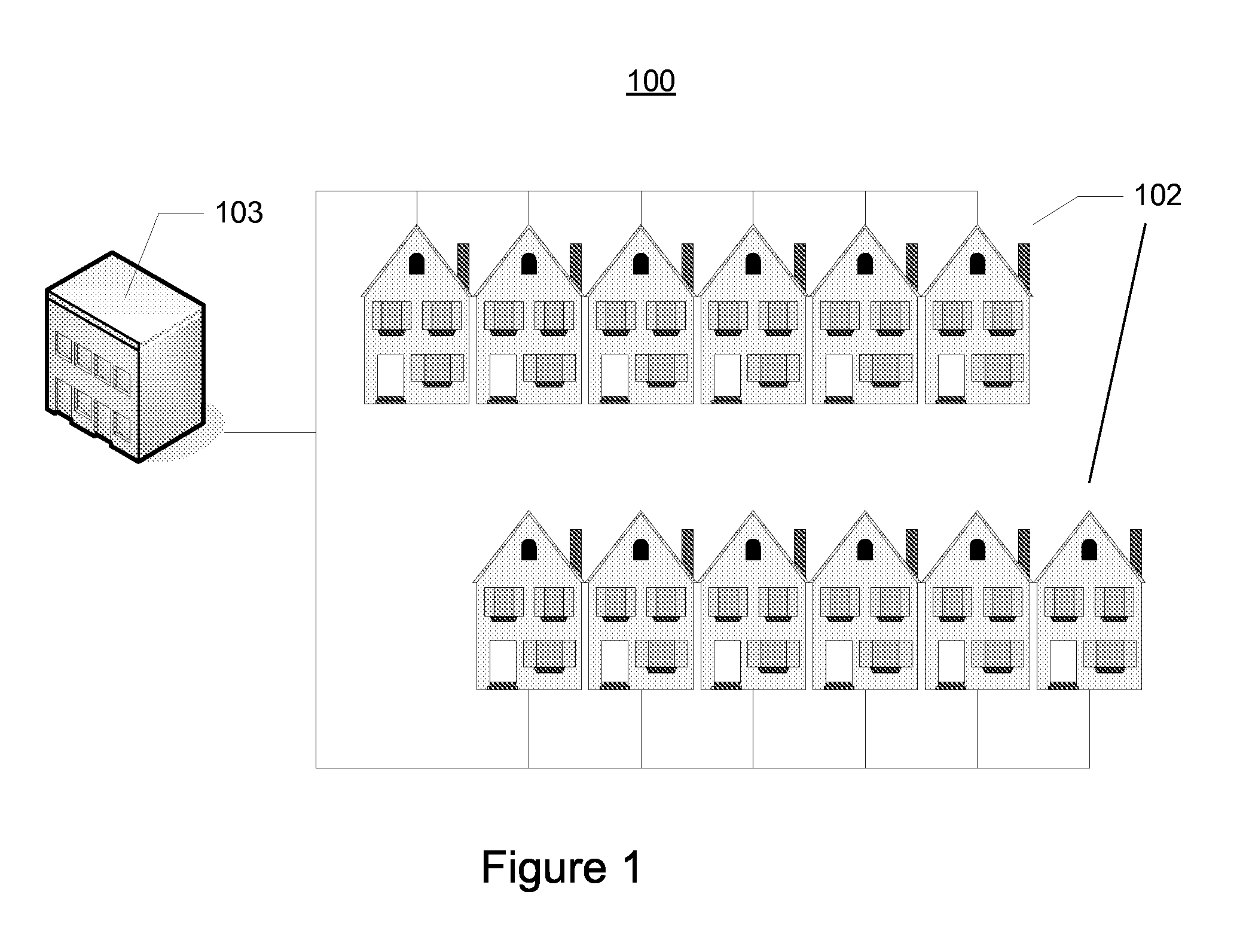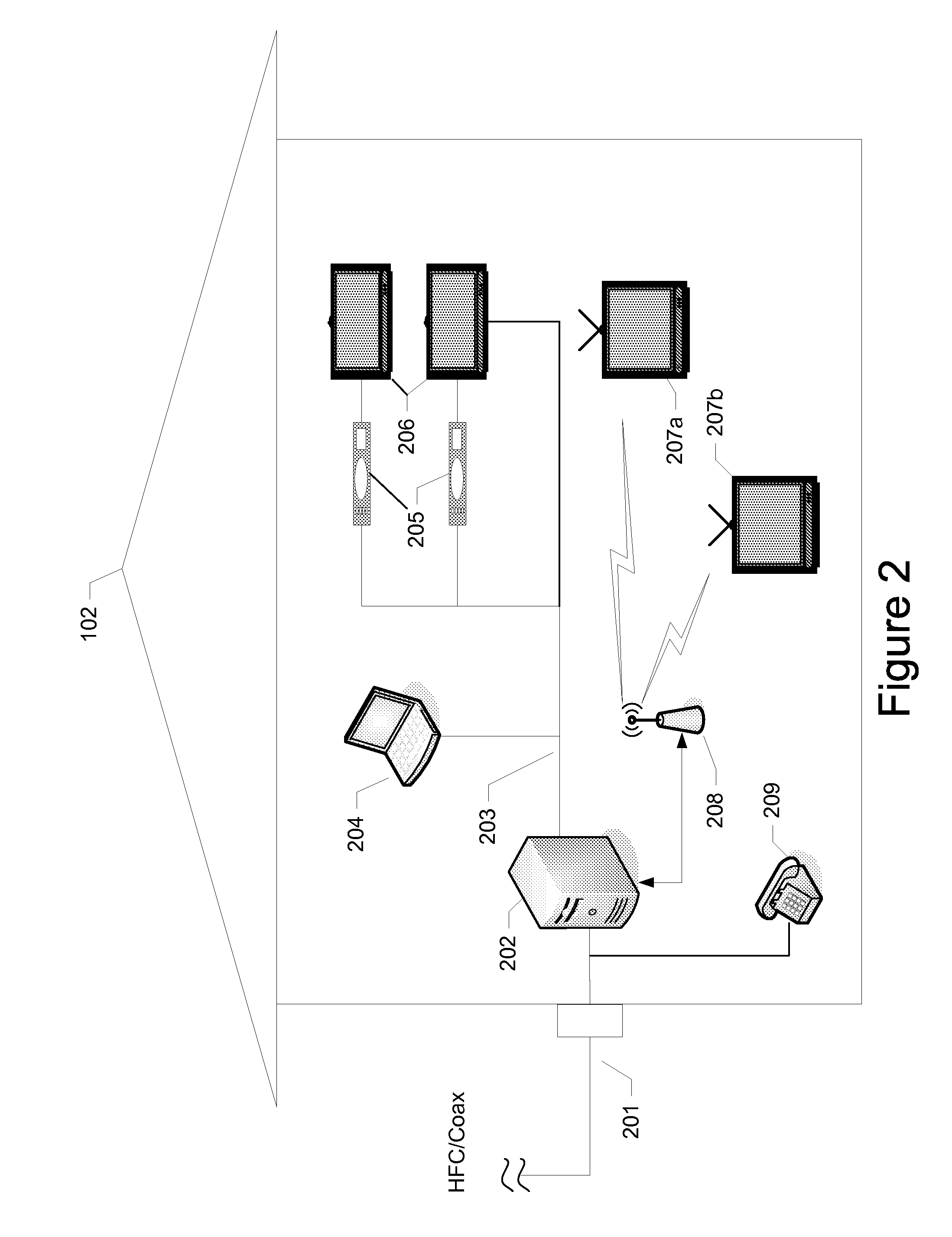Identification of a fault
a fault and identification technology, applied in the field of identification of faults, can solve the problems of providing a misleading or incomplete picture of signal performance, poor user experience, and often hidden intermittent issues, and achieve the effect of promoting accuracy in symbol recognition/detection and minimizing or eliminating demodulation errors
- Summary
- Abstract
- Description
- Claims
- Application Information
AI Technical Summary
Benefits of technology
Problems solved by technology
Method used
Image
Examples
Embodiment Construction
It is noted that various connections between elements are discussed in the following description. It is noted that these connections are general and, unless specified otherwise, may be, for example, wired or wireless, direct or indirect, and that this specification is not intended to be limiting in this respect.
FIG. 1 illustrates an example information distribution network 100 on which many of the various features described herein may be implemented. Network 100 may be any type of information or content distribution network, such as satellite, optical fiber, coaxial cable, telephone, cellular, wireless, etc. The network may be a hybrid fiber / coax distribution network found in many television networks. Such networks 100 may use a series of interconnected lines 101 to connect multiple homes 102 to a provider's headend or central location 103. The central location 103 may transmit downstream information signals onto the lines 101, and each home 102 may have a tuner used to receive and ...
PUM
 Login to View More
Login to View More Abstract
Description
Claims
Application Information
 Login to View More
Login to View More - R&D
- Intellectual Property
- Life Sciences
- Materials
- Tech Scout
- Unparalleled Data Quality
- Higher Quality Content
- 60% Fewer Hallucinations
Browse by: Latest US Patents, China's latest patents, Technical Efficacy Thesaurus, Application Domain, Technology Topic, Popular Technical Reports.
© 2025 PatSnap. All rights reserved.Legal|Privacy policy|Modern Slavery Act Transparency Statement|Sitemap|About US| Contact US: help@patsnap.com



